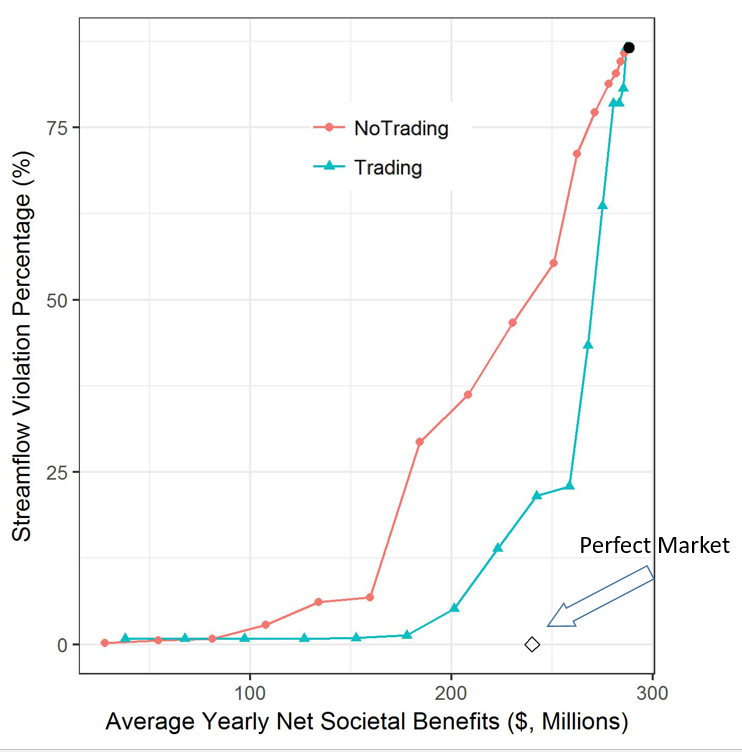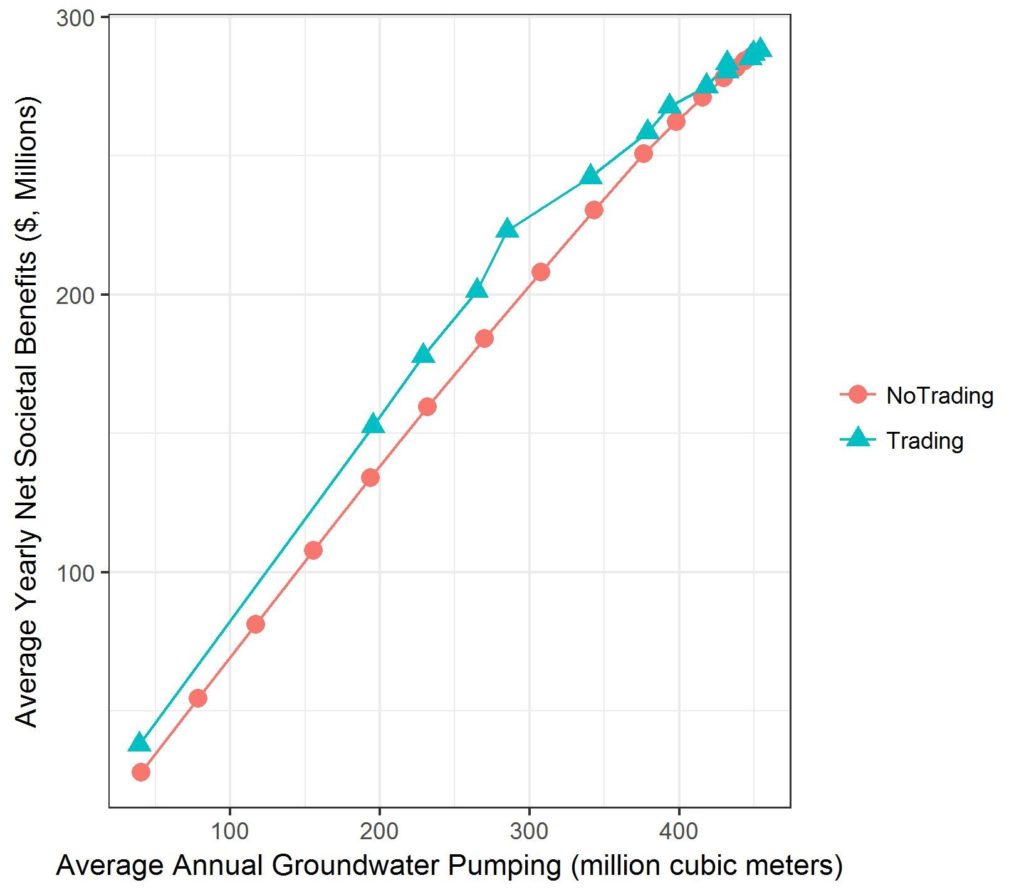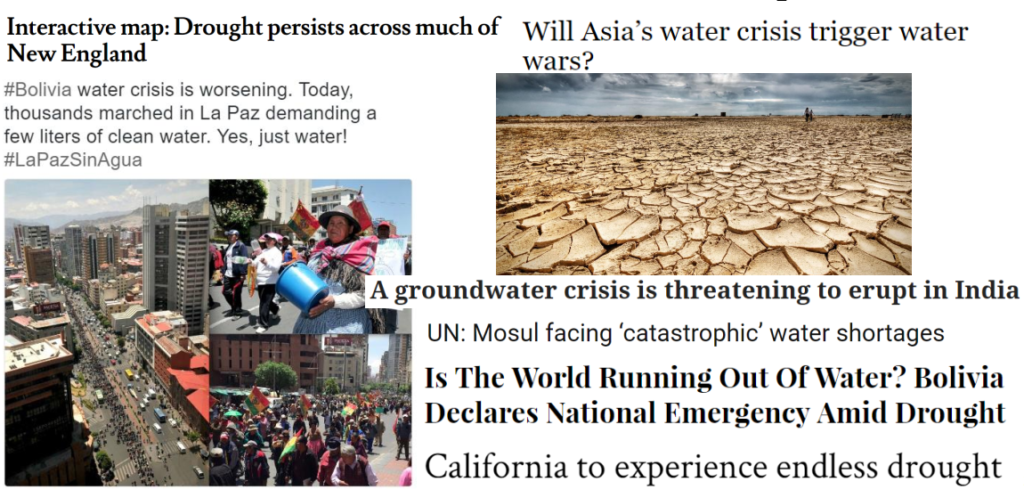by: HASSAAN F KHAN
In this final post on the series Economic Allocation of Groundwater, we’ll evaluate the tradeoff between economic gains and environmental performance in the Frenchman Creek Basin. How is environmental performance related to economic gains in the context of groundwater pumping? In the Frenchman Creek Basin, as with many other basins, streams are hydrologically connected to the groundwater. What that means is that flow in many streams and rivers is supplemented by groundwater (known as baseflow). With increased groundwater pumping, the groundwater level goes down, and reduces the amount of ‘baseflow’ in the rivers.
The figure below shows the tradeoff for three different types of groundwater management policies. Here, our metric for environmental performance is streamflow violation percentage, which is simply the percentage of occurrence when modeled streamflow is less than the streamflow targets at specific ecologically sensitive locations across the basin. The y-axis shows the streamflow violation percentage, while the x-axis represents the combined annual farmer profit.
There are four key results illustrated in this figure:
- The black dot (in the top-right corner of the figure) shows the tradeoff when there is no management policy; every farmer is free to pump as much groundwater as he/she desires (let’s call it the free access policy). While the free access policy results in the highest economic benefits it also results in the least environmentally sustainable outcome. This is because in the absence of groundwater management, farmers act in their own interests to maximize their profits. The ‘costs’ of environmental degradation are socialized with groundwater. Since farmers don’t directly experience these costs, there is no incentive to use groundwater ‘sustainably’ if there are no regulations on groundwater use. In a free access system, these environmental costs accumulate over time and affect all groundwater users in the region (analogous to the concept of externalities).
- We also see how the performance of a realistic water market compares to that of a realistic water market. The diamond at the bottom right corner of the figure shows the tradeoff when a ‘perfect’ water market is in place. This point signifies the most economic benefits that can be obtained on a system-wide level without any ecological damages. While it is nearly impossible to achieve this level of environmental efficiency, we see that a realistic water market (shown in the blue line) is closer to this ‘perfect’ outcome than a policy where groundwater quotas are imposed in the system (shown by the red line)
- Allowing trading between agents leads to a lower streamflow violation for a given level of societal benefits because as the price of groundwater increases, less efficient farmers reduce their water usage and sell their permits to the more efficient farmers. Since now a greater proportion of water is being used by the more productive water users, crop production per unit of water used increases. So for a given level of water use, trading of water permits leads to lower environmental damages.
- Increasing streamflow violations indicate a falling groundwater table resulting in higher cost of pumping groundwater. That raises the question: shouldn’t the higher pumping costs eventually force farmers to reduce their pumping? In this case, the answer is no. Because the pumping costs are low relative to the benefits of pumping, declining groundwater levels don’t impede depletion.
Hassaan F. Khan is a PhD Candidate in the Hydrosystems Research Group. You can find him on Twitter @hasfkhan.










